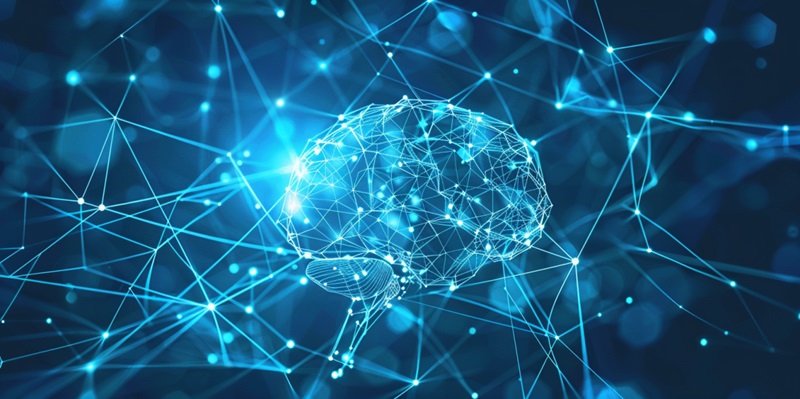The burgeoning domain of artificial intelligence has ushered in a new era of technological capabilities and applications. Amongst the sea of advancements, generative AI and large language models (LLMs) stand as towering landmarks, hinting at the possibility of achieving the coveted Artificial General Intelligence (AGI). These innovations are not merely reshaping industries; they are thoroughly redrawing the boundaries of what machines are capable of. The intricate dance between the current capacities of these AI models and their trajectory toward human-like cognition is a captivating one, suggesting a future where cognitive machines are a common reality. This article takes an in-depth look at the evolution, testing, and application of these technologies and ponders their role on the path to AGI.
The Evolution and Capabilities of Generative AI and LLMs
Generative AI has astounded the world with its ability to produce content that seems to spring from the human mind. LLMs are at the forefront of this wave, exhibiting proficiency in language tasks that push against the boundaries of the possible. These models operate on principles of machine learning, deriving meaning and context from vast datasets, and applying it within intricate neural networks. Their performance in understanding and generating human languages has been nothing short of revolutionary. Nevertheless, the complexity of their internal mechanisms frequently remains a mystery—a “black box” of cognitive processes that challenge our understanding of how machines learn.
Despite the enigmatic nature of their inner workings, the capabilities of these AI systems have grown exponentially. From generating new works of fiction to coding complex software, the flexibility of LLMs is a testament to their advanced design. These models embody the cutting-edge of generative AI, as they continue to develop an almost eerie likeness to human intelligence, at least within their specialized domains of language and creativity. The growth of these technologies is not showing signs of slowing, and their potential is only beginning to be unlocked.
Assessing AI Reasoning Through Practical Tests
The hallmark of intelligence, human or artificial, lies in its capability for reasoning. OpenAI’s ChatGPT series, encompassing models like GPT-3.5 and the more recent GPT-4, present an opportunity to measure just how sophisticated AI reasoning can be. These tests are not merely academic exercises; they provide insight into the AI’s ability to think, understand context, and even engage in back-and-forth dialogue resembling human conversation. ChatGPT demonstrates an impressive level of reasoning, tackling problems and queries in a way that was once the sole province of human intellect. However, these abilities are not inherent but rather drawn out through targeted prompts, indicating that AI’s independent problem-solving is still in its infancy.
When subjected to rigorous testing, these LLMs reveal a remarkable adeptness at reasoning, one that seems to emerge naturally from their programming despite not being explicitly trained for it. This emergent quality is indicative of the latent potential within AI—the possibility for systems to develop capabilities beyond their initial scope. Such emergent reasoning suggests that AI might soon be able not only to answer complex questions but also to anticipate needs and offer solutions unsolicited, marking a significant leap forward in artificial intelligence.
Generative AI: Beyond the Hype and Market Valuations
As generative AI captures the collective imagination, there is a tendency to conflate its perceived value with the ebbs and flows of market sentiment. Yet, for analysts such as those at Omdia, there’s a clear line between the hype-driven bubble and substantive technological progress. Generative AI, particularly in the form of LLMs, represents a genuine revolution with enduring implications for our technological landscape. These advancements, while they might inspire speculative investment bubbles, are not ephemeral; they stand on solid ground, poised to permanently alter our relationship with machines and the data that feeds them.
While market valuations might wax and wane with investor sentiment, the technology itself is on a consistent upward trajectory. Companies, both big and small, have leveraged generative AI to disrupt and redefine industries, demonstrating the real-world impact of these advancements. From media and entertainment to healthcare and law, the applications of AI are expanding, driven by genuine innovation that deserves distinction from market fluctuations.
Localizing LLMs: The Shift to Edge Computing
In a shift of paradigmatic importance, the deployment of LLMs is migrating towards edge computing. This change brings more than convenience; it heralds a new wave of efficiency, privacy, and accessibility. Heavyweight industry players are striving to condense their models without sacrificing prowess, optimizing LLMs to operate seamlessly on personal devices and other localized hardware. The advantages of this localization movement are manifold: reduced reliance on cloud services, lower latency in operations, and a bolstered guard around user data privacy. These measures also make AI more sustainable from an economic perspective, as the decreased need for central processing power lowers costs.
The drive to embed LLMs into our everyday gadgets is leading to surprising innovations. Teams at companies like Google and Microsoft are pioneering techniques that manage to maintain the integrity and performance of these models, even when scaled down to fit into more modest computational spaces. Such localized AI opens up avenues for personalized assistance and responsive AI interaction that were previously unimaginable outside of a sci-fi novel. With every step toward localization, the potential of generative AI becomes more interwoven with our daily lives.
Generative AI as a Tool for IT Professionals
The wave of generative AI has reached the shores of professional realms, and IT specialists are some of the first to harness its benefits. By fine-tuning LLMs with specific datasets, companies can morph these versatile models into in-house tools tailored to their unique business needs. The application of these tools ranges from automating routine tasks to providing sophisticated support for complex decision-making processes. Such applications attest to the diverse set of reasoning abilities embedded within AI, including but not limited to logical, analogical, and social reasoning, which now assist human minds in navigating complicated work scenarios.
For IT professionals, generative AI represents a multipurpose ally—capable of ideation, error-checking, and even some forms of project management. These tools offer an extra layer of cognitive muscle, streamlining workflows, and freeing up human resources for higher-level tasks. Embracing AI, in this sense, does not spell obsolescence for skilled workers; rather, it heralds an era of augmented productivity and enhanced job satisfaction.
The Stepping Stones Toward Artificial General Intelligence
Testing has shown these language models to have a natural aptitude for reasoning, an emergent feature that hints at AI’s untapped potential. This not only manifests in their ability to solve difficult questions but also posits a future where AI could proactively address problems and innovate without explicit guidance—signaling a major advancement in AI capabilities.


